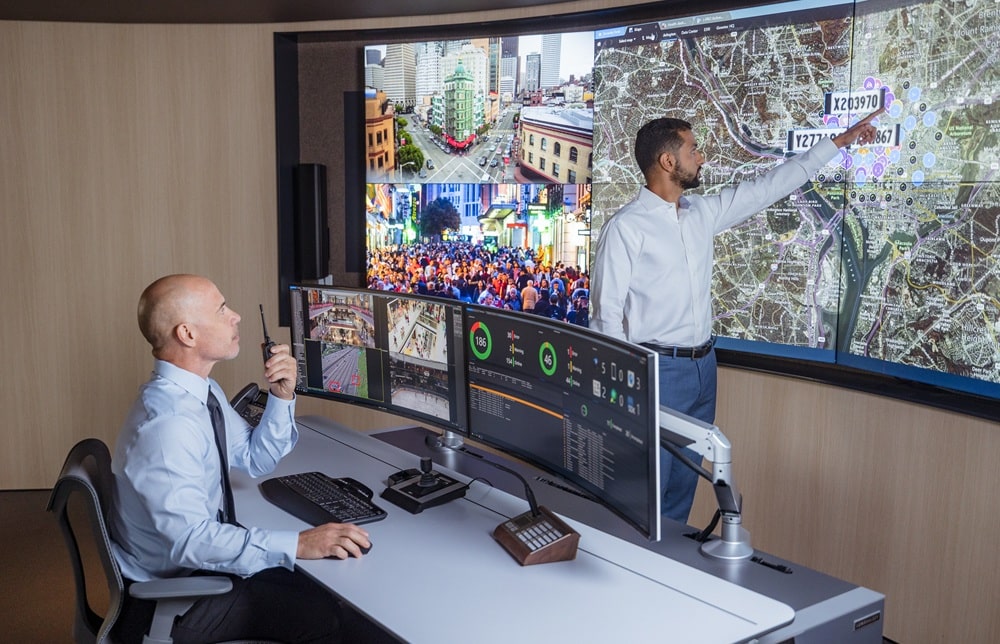As physical security becomes more integrated with IT and business operations, organisations are facing a critical decision: stick with closed, proprietary systems, or embrace open architecture for long-term flexibility and innovation. In this special article, Ben Durrant, Account Executive at Genetec, will explore how open architecture empowers security teams to, mix and match best-in-class technologies across vendors, seamlessly integrate with legacy infrastructure, future-proof their systems for emerging threats and innovations, and strengthen cybersecurity and reduce operational risk.
Build smarter security operations by avoiding vendor lock-in
For organisations managing increasingly complex physical security environments, the limitations of closed, proprietary systems are becoming harder to ignore. What might appear to be a convenient, all-in-one solution often quickly turns into a rigid, siloed infrastructure that can’t evolve with changing operational needs.
Rather than relying on closed systems, many organisations are realising the benefits of a more flexible approach: open architecture. This model has proven itself as a reliable and scalable way to design security systems. It allows organisations to select software and hardware from different vendors without sacrificing integration or performance. More importantly, it enables teams to tailor systems to specific needs and adapt them over time, without being locked into a single vendor’s ecosystem.
Beyond compatibility: Why open architecture matters
Open architecture is often associated with compatibility, but it goes beyond making devices talk to one another. It’s about designing a system that is inherently adaptable—capable of integrating new technologies, connecting legacy infrastructure, and supporting innovation at scale.
Unlike closed systems that require uniformity across all components, open systems are built to accommodate variety. That means organisations can preserve existing investments, such as video cameras or access control hardware, even as they modernise software platforms or introduce advanced capabilities like cloud-based analytics or AI-driven investigations.
This approach eliminates the need to rip and replace functioning hardware, significantly reducing both disruption and cost. Security teams can keep equipment from multiple vendors, integrate with third-party vendors to expand capabilities, and evolve at their own pace over months or years, without being locked into aging technology that can’t adapt to evolving needs.
Unified platforms, not patchwork solutions
As organisations adopt this flexible approach, they must also consider how these diverse systems will work together. It’s not enough for devices and software to simply connect; they must operate as one cohesive system that supports efficient workflows and real-time decision-making.
Some vendors attempt to address this challenge by promoting “all-in-one” platforms. However, many of these solutions are built through acquisition or retrofitted integration of disparate products. While they may appear unified on the surface, they often rely on middleware, custom connectors, or manual workarounds to link systems that were never designed to operate together. The result is higher maintenance overhead, inconsistent performance, and limited scalability, which can undermine the very efficiency unification is supposed to deliver.
Open architecture enables unification by design, not by workaround. Because open systems are built to support interoperability across vendors and technologies, they allow organisations to create a single, cohesive environment where video, access control, intrusion detection, and other systems seamlessly share data and workflows. Security teams gain a unified interface that supports faster decision-making, reduces training complexity, and enhances overall operational effectiveness.
Avoiding vendor lock-in and hidden costs
Achieving this level of true unification depends on maintaining choice and flexibility, something proprietary platforms often limit. When organisations lock themselves into a single vendor’s ecosystem, it can severely restrict how systems evolve and which technologies they can adopt in the future. And the costs of that lock-in are not always visible at the start.
When you depend on a single supplier for both software and hardware, upgrades can become expensive, service contracts restrictive, and innovation sluggish. If a vendor discontinues support for a key product line, you may be forced into premature upgrades or complete system replacements.
In subscription-based closed systems, the consequences can be even more severe. If your organisation stops paying for the platform—whether due to budget shifts, contract disputes, or changes in strategy—your cameras and other connected devices may become unusable. Functioning hardware is rendered inoperable not because of a technical failure, but because access to the software was lost. This creates a fragile infrastructure where business continuity can depend on a single licensing agreement.
Open systems avoid these pitfalls by giving you the freedom to choose components based on performance, pricing, and support, not just compatibility with a proprietary ecosystem. This ability to mix and match best-in-class solutions is especially valuable in industries with specialised needs or regulatory requirements, where a one-size-fits-all approach simply won’t work.
Building resilience through openness
Security systems don’t operate in a vacuum. They intersect with IT networks, compliance protocols, and business operations. That makes adaptability a critical requirement, not only for performance, but for resilience.
An open system architecture supports integration with cybersecurity tools, business intelligence platforms, and smart building technologies. This cross-functional capability allows security operations to play a more strategic role within the organisation, contributing to both safety and operational efficiency.
It also enhances incident response. With unified systems that centralise data from across the environment, teams can detect and respond to threats faster and with greater context. That speed and coordination can make a critical difference in high-stakes scenarios.
Mitigating post-deployment risk
Open systems also reduce post-deployment risk. With proprietary platforms, future changes in vendor policies, licensing models, or system updates can introduce unexpected vulnerabilities or compatibility issues. An open architecture puts more control in the hands of the organisation, allowing teams to manage updates on their own terms and avoid disruptive changes that could compromise system performance or security down the line.
Scaling without disruption
Another key advantage of open architecture is its ability to support phased deployment. Organisations can start by modernising a single system—say, access control—while continuing to use existing cameras or intrusion detection devices. As needs evolve, they can add capabilities like license plate recognition, mobile credentials, or cloud storage without disrupting core operations.
This incremental approach is especially useful for multi-site enterprises or institutions managing tight budgets. Rather than waiting for a full system replacement cycle, teams can deploy improvements over time, aligning with both budgetary cycles and operational priorities.
It also helps ensure the longevity of the system. As new technologies emerge, organisations can integrate them without being forced into wholesale infrastructure changes. Whether it’s incorporating facial recognition, edge-based AI analytics, or new types of sensors, open architecture ensures that the system can evolve without limits.
Choosing openness for the long term
Physical security technology is moving quickly, and the next wave of innovation is already on the horizon. Open architecture provides a path forward that prioritises adaptability, integration, and unification. It offers a way to scale systems without disruption, protect investments in hardware, and avoid the roadblocks that come with proprietary models. For organisations that see physical security as more than just a set of tools, for those that view it as a strategic function that must integrate with broader operational goals, open systems aren’t just a better technical choice. They are a smarter business decision.
For more Genetec news, click here





